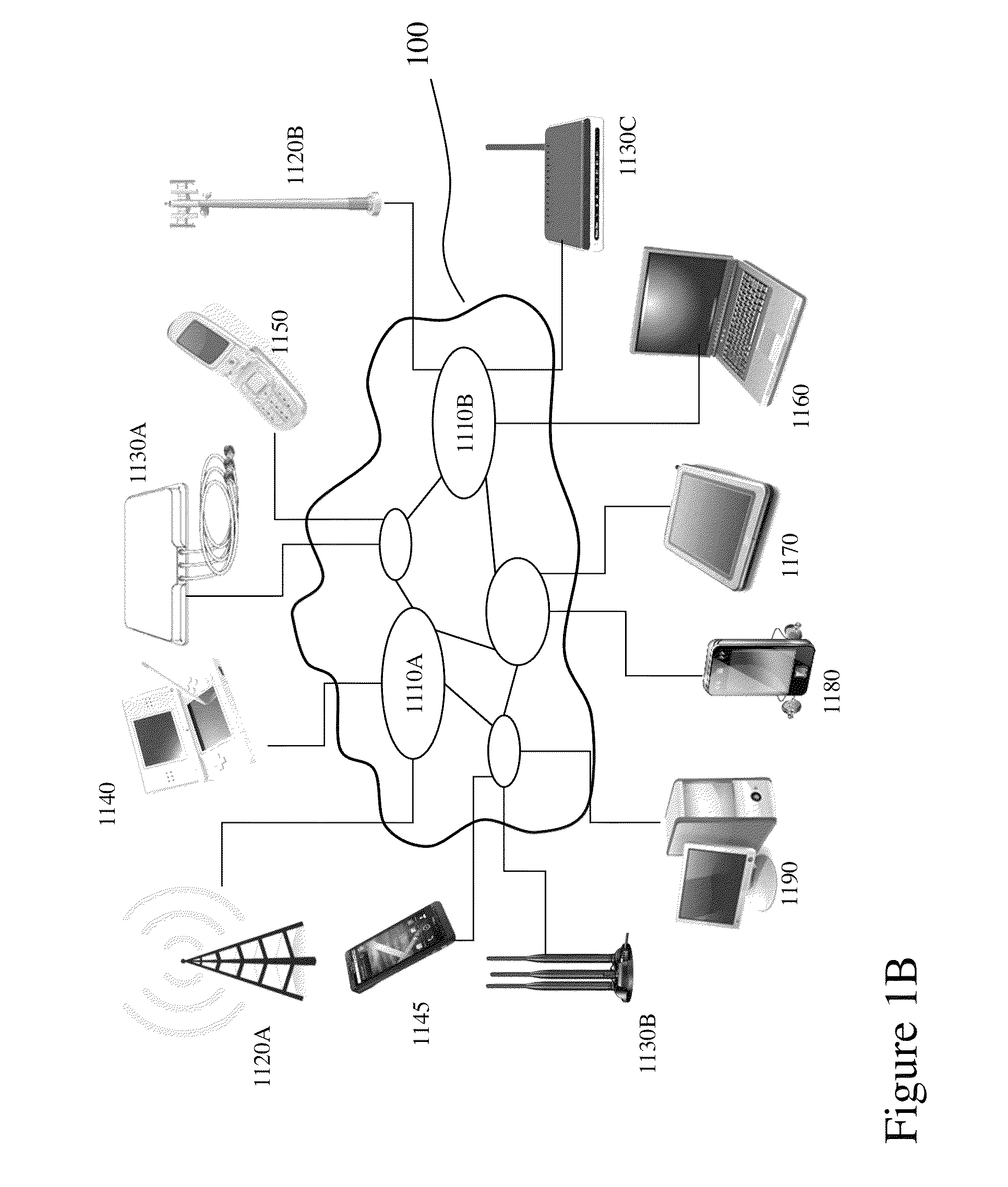Dual mode radio frequency receivers for wideband signal processing
a receiver and wideband technology, applied in the field of rf receivers, can solve the problems of increasing frequency, increasing radio interference, complex deployment of wireless systems, etc., and achieve the effects of wide ibw, low cost, and high speed
- Summary
- Abstract
- Description
- Claims
- Application Information
AI Technical Summary
Benefits of technology
Problems solved by technology
Method used
Image
Examples
Embodiment Construction
[0045]The present invention is directed to RF receivers and more specifically to broadband receivers for real-time signal analysis.
[0046]FIG. 1B depicts a network 100 accessed by a plurality of wireless devices. The network 100 may be formed from a plurality of sub-networks, of which first and second sub-networks 1110A and 1110B are identified. First sub-network 1110A may for example be a transport network associated with a service provider wherein the primary communications are provided through a first telecommunications standard, such as GSM for example, relating to cellular networks. Second sub-network 1110B may for example be associated with Internet Protocol (IP) traffic according to a second telecommunications standard, e.g. Internet Protocol v6. Network 100 may therefore be formed from a combination of wired and wireless infrastructure that provides a wireless interface for wireless devices according to one or more standards. For example, first sub-network 1110A being GSM bas...
PUM
 Login to View More
Login to View More Abstract
Description
Claims
Application Information
 Login to View More
Login to View More - R&D
- Intellectual Property
- Life Sciences
- Materials
- Tech Scout
- Unparalleled Data Quality
- Higher Quality Content
- 60% Fewer Hallucinations
Browse by: Latest US Patents, China's latest patents, Technical Efficacy Thesaurus, Application Domain, Technology Topic, Popular Technical Reports.
© 2025 PatSnap. All rights reserved.Legal|Privacy policy|Modern Slavery Act Transparency Statement|Sitemap|About US| Contact US: help@patsnap.com



